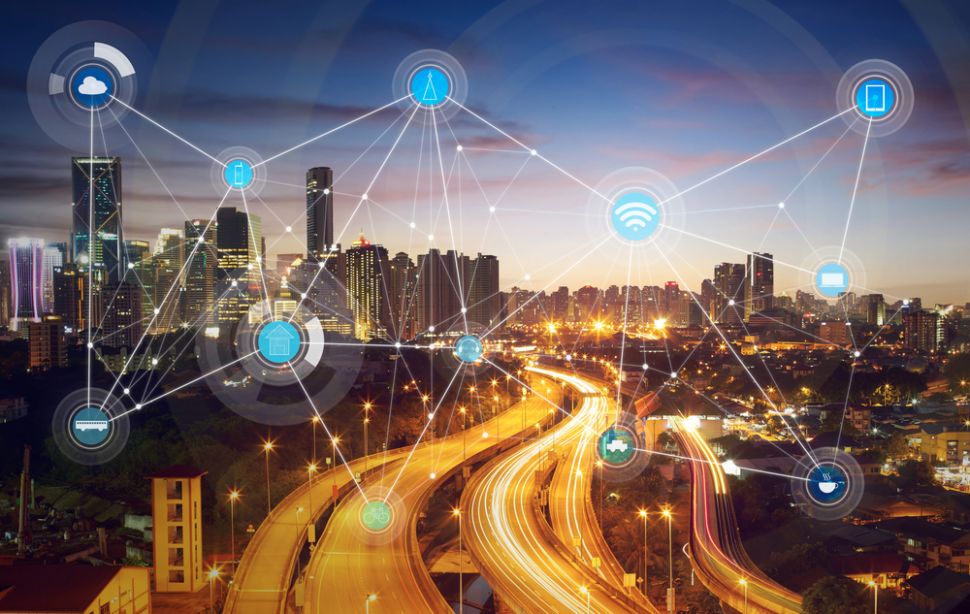Digital innovations for the future of smart cities
Alcatel-Lucent Enterprise’s insight on smart city technology

Smart cities represent the next stage of urban living for which digital experience and innovative services are vital factors to attract new citizens, new businesses and optimize city resources. By leveraging an extensive and sophisticated network of sensors, valuable insights can be generated to improve the experience of citizens and the delivery of new services, enhancing asset management in a cost-effective manner.
Stephan Robineau, Executive VP, Network Business Division & General Manager Alcatel-Lucent Enterprise USA.
For example, smart street lighting can improve people’s safety, regulate energy consumption, and notify the platform of any necessary repairs. While the number of use cases is astounding, a smart city requires an unparalleled combination of always on digital communication services coupled with a mass-scale Internet of Things (IoT) network. For this likely complex mission critical service platform to operate successfully, seamless integration and secure connectivity are essential.
Innovation and the city
A smart city relies on innovative technology to support its strategic digital priorities, increase the efficiency of its resources and processes, improve transparency and accountability towards citizens, and enhance its economic power. Advances in cutting-edge technology, and the number of smart city use cases it can enable, have been incredible.
IoT deployments in a smart city can boost innovation for differentiating services. For example, Location Based Services (LBS) enable wayfinding and geo location for indoor environments such as museums and other public indoor spaces. This allows city stakeholders to gather information about the location of visitors and employees. This has huge ramifications for tourism and public safety, as LBS can provide information to improve and guide crowd movements when necessary. Moreover, digital connection to assets enables equipment and employees to be located in real-time. Asset tracking supports increased efficiency, as equipment can be found more quickly, and reduces costs, as it enables a city to rationalize its asset portfolios based on use and availability.
This is just the beginning. As the technology powering smart cities becomes more advanced, the number of use cases will continue to grow, multiplying the social benefits and digital services citizens can enjoy.
Embracing the challenge
While the benefits of advances in technology for smart cities are abundantly clear, implementing change securely across a vast cityscape, which could serve millions of citizens, can pose unique challenges. These must be understood, to make smart cities a success.
A smart city infrastructure comprises a disparate and extensive set of technological platforms and devices in a large-scale IoT network. To successfully connect and integrate these distinct elements, a city must leverage a digital age network that enables plug-and-play activation for IoT devices, robust security, and automation. This underlying network is fundamental to enable seamless adaption to the rapidly changing requirements of an innovative and dynamic smart city.
Are you a pro? Subscribe to our newsletter
Sign up to the TechRadar Pro newsletter to get all the top news, opinion, features and guidance your business needs to succeed!
A digital age network is built on three key pillars. It is autonomous, meaning it simplifies deployment by automatically and securely connecting people, processes, applications, and objects. It is secure and efficient, easily onboarding IoT devices using segmentation techniques to minimize the risk of the network being compromised. It enables innovation and process integration through workflow automation and open interfaces to enhance productivity, and reduces the risk of vulnerabilities caused by human error.
The IoT devices are key to citizen services innovation and benefits, but by their sheer number, expose the edge of the infrastructure to potential cyberattacks. The dangers of compromising a smart city infrastructure are too great to bear. Keeping the IoT devices safe requires the same digital age network’s approach to multi-level security. An approach that protects citizen data, the device itself, and the network availability. An IoT containment strategy can protect systems by identifying the IoT device and automatically provisioning and applying the right configuration policies. By segmenting a single physical network into separate virtual networks (containers), IT managers can ensure that each service or application has its own focused segment. This helps to guarantee optimal citizen experience, service integrity and secure operations. The network, supported by AI and machine learning algorithms, monitors the behavior of IoT devices and applications, ensuring they function as expected. Every authorized object is digitally inventoried, and the type and number of IoT devices connected to the network are known at any given time. Continuous monitoring is crucial to keep the network safe, taking action immediately in case of rogue intrusion or deviation from usual behavior.
Citizen and business experience at the center
Alongside a digital age network as the underlying infrastructure for a smart city, it is also important to have distinct and measurable goals leading to an increase in citizen and business satisfaction. Whether they are tackling climate change, sustainable transition, social integration, healthcare, or education, among others, a city needs to be clear on what it wants to achieve and stay focused on a continuous digital transformation empowering a superior way of life for citizens and a thriving and attractive environment for businesses.
To achieve this, it comes down to mastering the combination of digital communication services and IoT deployment through secure connectivity and seamless integration. Effectively connecting people, objects and processes is the only way to cut through complexity, and successfully deliver innovative services for the smart cities of the future.
- We've featured the best cloud storage.
Stephan Robineau, Executive Vice President, Network Business Division & General Manager Alcatel-Lucent Enterprise USA, leads an international team focused on delivering networking solutions and services for Enterprise IoT enabled infrastructure.